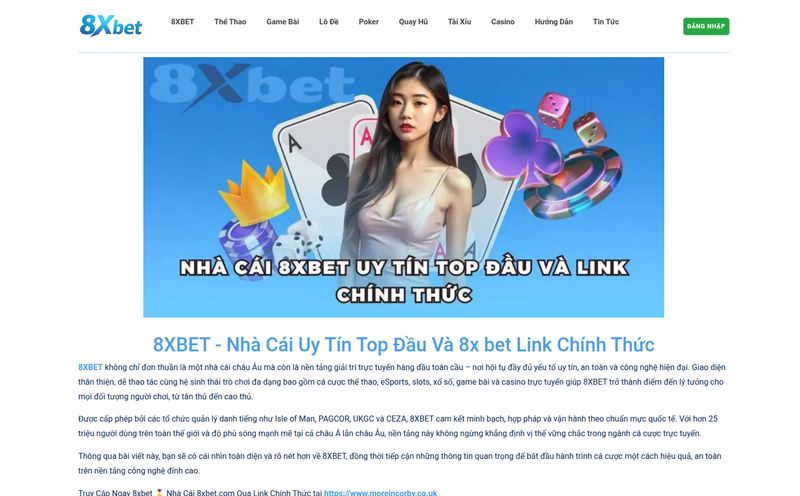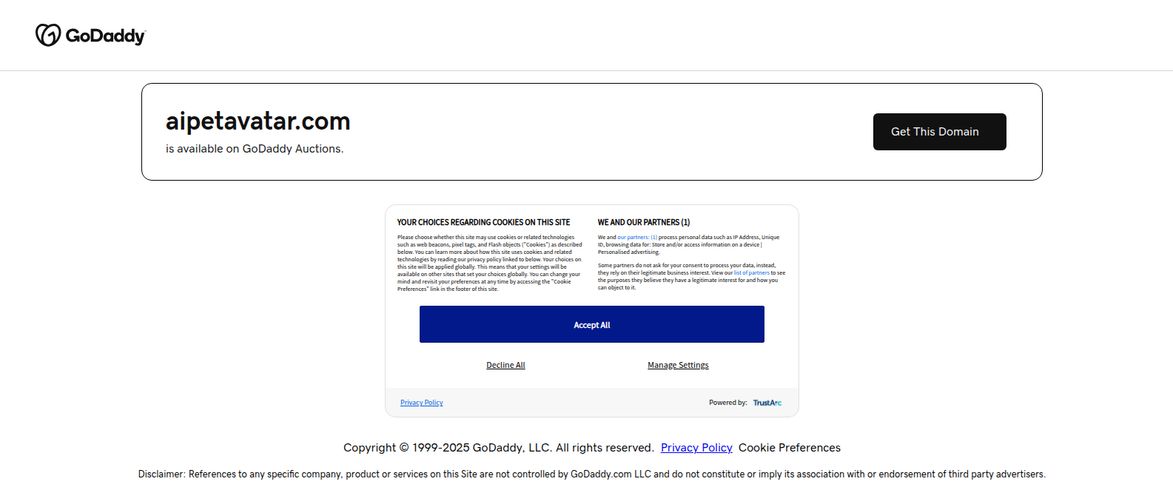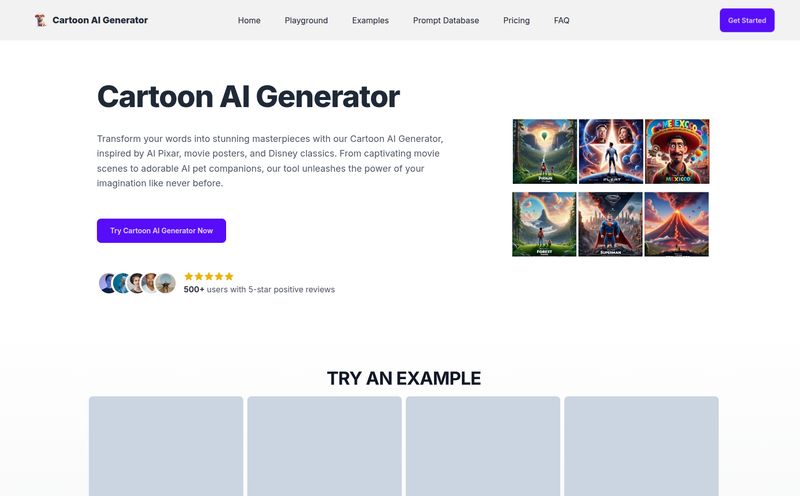Ever been scrolling through X (you know, the platform formerly known as Twitter) or a design forum and seen a piece of AI art that just stops you in your tracks? It's stunning. The style is perfect, the composition is a chef's kiss, and you're just sitting there thinking, “How in the world did they make that?” You know it’s AI, but the prompt feels like it must be a secret, 500-word-long spell whispered into the ear of a Midjourney bot.
It's a common frustration in the fast-paced world of generative AI. Prompting has become its own art form, a new kind of SEO for machines. For every creator sharing their secrets, there are ten who guard their prompts like a dragon guards its gold. A while back, a tool popped up that promised to be the key to this locked treasure chest. It was called UnPrompt, and the idea was brilliant.
But like many brilliant ideas in the tech space, it seems to have become a bit of a digital ghost. Let's talk about what UnPrompt was, what it promised, and the 404-shaped hole it left behind.
What Exactly Was UnPrompt?
Simply put, UnPrompt was supposed to be Shazam for AI art. The concept was incredibly straightforward: you give it an image, and it reverse-searches a massive database to find AI-generated images that look similar. But here's the kicker—it wouldn't just show you the pictures. It would show you the full prompt and the generation parameters used to create them.
Imagine the power. You could upload a cyberpunk-style portrait and potentially see the exact prompts, negative prompts, seeds, and AI models that artists used to get that specific gritty, neon-soaked aesthetic. It claimed to have a database of over 35 million AI art prompts. Thirty-five million! That's not just a tool; it's an encyclopedia for AI art creation.

Visit UnPrompt
Decoding the Features
The platform wasn't just a one-trick pony. It had a few layers to it that made it really appealing to both beginners and seasoned prompt engineers.
The Reverse Image Search Magic
This was the main event. The ability to upload any image and get a list of similar AI creations with their full DNA was a game-changer. For someone like me, who's always dissecting how things work to generate traffic and engagement, this felt like getting a peek at a competitor's secret playbook. It was a way to learn, to iterate, and to stop guessing what “cinematic lighting” or “unreal engine 5” actually does to an image.
Searching With Good Old-Fashioned Text
If you didn't have an image, you could also just type in a text query. So, you could search for “golden retriever in a library” and see hundreds of different takes on that idea, each with the prompt that got it there. It was a fantastic way to brainstorm and see how different phrasing or artist names could completely change the output.
The Data Behind the Curtain
UnPrompt didn't just give you the prompt. It offered a bit more context, with two interesting scores:
- Similarity Score: A percentage that told you how closely a result matched your uploaded image. Pretty standard stuff, but helpful for quickly sorting through results.
- Aesthetic Score: This one's a bit more… controversial. It provided a score on how aesthetically pleasing the image was. Now, let’s be honest, beauty is in the eye of the beholder, and an AI's opinion on aesthetics is always gonna be subjective. I’ve always found these scores more of a fun gimmick than a serious metric, but it was a neat addition nonetheless.
The Good, The Bad, and The Subjective
Every tool has its ups and downs, and UnPrompt was no exception. On paper, the value proposition was huge. It was a learning tool disguised as a search engine. You could see how weighting worked, how specific artist names influenced style, and how negative prompts cleaned up mangled hands (the eternal struggle of AI art). The interface was clean and easy to use, which is a huge plus when you're dealing with complex data.
However, there were some built-in limitations. The accuracy of a similarity score can always be hit-or-miss. And as I mentioned, the aesthetic score is pure subjectivity. Plus, with a database of 35 million images—while huge—you were never guaranteed to find an exact match for your obscure, niche art style. It was a tool for inspiration, not necessarily for plagiarism.
So, Where Is It? The 404 Elephant in the Room
This is where the story takes a turn. If you try to visit UnPrompt today, you're greeted with a cold, impersonal 404 NOT_FOUND error. The deployment, as the tech jargon goes, cannot be found. It’s gone. Vanished.
What happened? Well, it's all speculation at this point. The world of AI tools is like the wild west right now. Projects pop up, gain a bit of traction, and then disappear without a trace. It could be a number of things:
- It was a passion project: Maybe a solo developer built it, and it just became too much to maintain.
- The cost was too high: Hosting 35 million images and running complex similarity algorithms costs serious money. Without a clear monetization plan (there was no pricing info available), the server bills could have easily sunk the project.
- It was acquired and shuttered: This happens all the time. A bigger company buys a cool piece of tech just to absorb the talent or technology and then closes the public-facing service.
Whatever the reason, it's a shame. UnPrompt was tackling a real need in the creator community.
The Best Alternatives to UnPrompt in 2024
Nature abhors a vacuum, and so does the internet. While UnPrompt is gone, other tools have stepped in to fill the void. If you're looking for that same reverse-prompt-search magic, here are a few places to check out:
- Lexica.art: This is a big one. It's a huge, searchable database of Stable Diffusion images and prompts. The interface is slick, and the search capabilities are top-notch. It’s a great resource for seeing what’s possible.
- Krea.ai: Krea has a feature that lets you upload an image and it will generate a prompt that could have created it. It's more of an interpretation than a direct database lookup, but it's incredibly powerful and a great way to get a starting point.
- PromptHero: This is more of a community-driven library of prompts for models like Midjourney, Stable Diffusion, and DALL-E. You can search by keyword and see what other people have created, along with the prompts they used.
Frequently Asked Questions
What is a reverse prompt search?
A reverse prompt search is a process where you provide an image to a system, and it analyzes the image to find or generate the text prompt that was likely used to create it with an AI art generator.
Is UnPrompt still active?
As of late 2023 and into 2024, the UnPrompt website is showing a 404 error, indicating it is no longer active or available to the public. It seems the project has been discontinued.
Why is prompt engineering important?
Prompt engineering is the skill of crafting effective text inputs to get desired outputs from AI models. It's important because the quality, detail, and structure of your prompt directly control the quality and specifics of the generated image. It’s the difference between getting a generic cartoon dog and a photorealistic portrait of a specific breed in a specific style.
Are AI prompt databases legal to use?
This is a gray area. Generally, using a prompt you found in a database is fine, as prompts themselves are typically not copyrightable. However, copying a generated image wholesale can have legal implications depending on the AI model's terms of service and the copyright status of its training data. Always check the terms of the platform you're using.
What are the best UnPrompt alternatives?
Great alternatives include Lexica.art for searching a massive Stable Diffusion database, Krea.ai for interpreting an image into a new prompt, and PromptHero for community-sourced prompts across various platforms.
Can I find the exact prompt for any AI image I see online?
Probably not. Unless the creator shares it, or the image was generated on a platform that makes prompts public, finding the exact prompt is nearly impossible. Tools like the ones mentioned can help you get very close, but there's always an element of interpretation and iteration involved.
A Digital Ghost in the Machine
The story of UnPrompt is a classic tale from the tech frontier. It was a brilliant solution to a modern problem, a tool that could have democratized a lot of the “secret knowledge” in the AI art world. Its disappearance is a reminder of how quickly things move and how fragile new projects can be, even great ones.
While we might have lost UnPrompt, the idea behind it lives on. The need to understand and deconstruct AI-generated media is only going to grow. For now, we'll have to rely on the alternatives and our own creativity to keep pushing the boundaries. Pour one out for a tool that was gone too soon.



